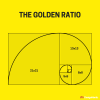Twenty-nine research teams analyzed the same data, and they all reached different results.
fivethirtyeight.com/…/science-isnt-broken/
Another study with the same goal of comparing the results from different research teams found similar disparities, though the graphs aren’t quite as pretty.
https://lemmy.world/pictrs/image/3847cc76-5fd4-45f2-9a28-c0af1da4d336.png
https://lemmy.world/pictrs/image/ef5d4e95-fe93-4fb5-801b-676d72762790.png





Add comment